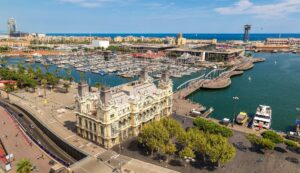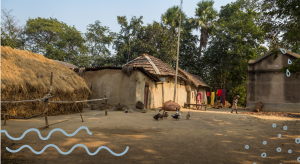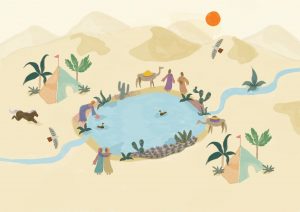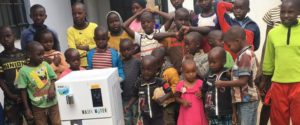eThekwini chose waterless toilets
In eThekwini, sanitation is seen as both a public health issue and key to successful water conservation. eThekwini Water & Sanitation won the 2014 Stockholm Industry Water Award for its transformative and inclusive approach to providing water and sanitation services.
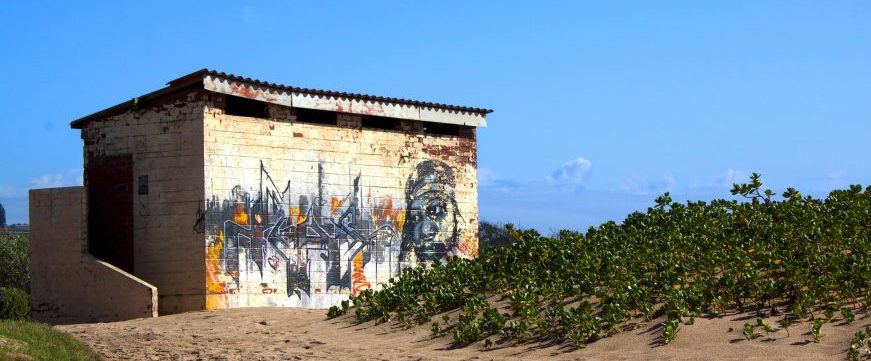 neglected public toilet building on sand dune at rural beach in South Africa
neglected public toilet building on sand dune at rural beach in South Africa Sanitation is not just about providing toilets. It is a public health issue. To address it, and to live up to the constitution, eThekwini in South Africa has installed over 85,000 waterless toilets in the community.
This article is written by Görrel Espelund and was originally published in WaterFront #3-4 2018.
Read the full issue here >>
When South Africa adopted its new constitution in 1996, water became a right and local governments were mandated to provide basic services, including sanitation.
This meant a fundamental change for municipalities around the country as services to non-white communities had been inadequate, unsafe or nonexistent during the apartheid regime.
In 1994, when South Africa became a democracy, it was estimated that 30 per cent of the population lacked access to adequate water supply services and that 50 per cent were without adequate sanitation.

“The national government had to correct the injustices of the past. The cities were well managed but the rural communities and the townships had been largely neglected,” says Teddy Gounden, Strategic Executive, eThekwini Water and Sanitation (EWS) unit.
With the new political dispensation, administrative boundaries were also shifted, and in 2000, the city of Durban was amalgamated with former black townships and rural areas to form the new metropolitan municipality of eThekwini. The population grew instantly (today it stands at 3.5 million) and roughly 60 per cent of the new municipality was now made up of rural areas with no, or very few, services in place. The same year, there was a cholera outbreak in the province. It became a grim reminder of the urgent changes that were needed.
“People collected drinking water from the rivers and defecated in the open or used poorly constructed pit toilets. Our idea was to provide free basic drinking water, dry onsite sanitation and appropriate education programmes to the households as a package. Not as separate services,” Gounden says. As the city is extremely water constrained, flush toilets were not an option.
In 2001, a pilot programme that provided 1,000 households with urine diversion toilets was launched.
“We received feedback on social and technical issues and we could alter the pilot accordingly. After roughly six to seven months, the politicians and the communities were mostly happy with the toilets and we decided to scale up.”
One technical issue that came up during the pilot was the size of the toilet. “The pedestals were designed for adults, meaning that when children used the toilets they contaminated the urine compartment with faecal waste. This was solved by adapting the seats, adding a second smaller lid to the pedestal that suited children,” explains Gounden.
The project also faced other challenges. The toilets had two chambers for faeces: when one was full the pedestal was moved to the empty chamber allowing for the content of the first chamber to decompose and for pathogens to die off. But, for the elderly, it became a burden to empty the dry content of the chamber after the decomposition process. Some community members also complained about the process being un-hygienic and that the chambers filled up too quickly.
We had to review our policies and started to provide an emptying service. This shows that the programme was not a straight-forward process, it was all about responding and adapting to different scenarios as we went along.
The installation of the toilets was subsidized by the national government as part of the development programme for previously disadvantaged communities and up to date, eThekwini has delivered over 85,000 toilets. In conjunction with the roll-out each household was provided with a ground tank that would give the family 200 litres of free basic water daily.
An important part of the roll-out was to educate the beneficiaries in health and hygiene, behavioural change and technical issues on how to maintain a urine diversion toilet.
“Education is always the key to success. We have our own division of educators but for this programme we had to employ local people and train them as facilitators. We built approximately 1,000 toilets a month and each household was visited about five times during the project cycle: from the installation to the first emptying. It was a lot of information to get out there.”
A large majority, Gounden estimates some 80 per cent of the community, is satisfied with the project. The toilets are new and previously the only option was open defecation or unsafe pit latrines.
“The ones who have had objections had different aspirations and had in some cases been promised flush toilets. They didn’t understand the reason why they couldn’t get flush toilets and didn’t like the fact that they had to maintain the toilets themselves.”
Throughout a process like this, you have to make sure to maintain the dignity of the people, Gounden points out, and if people see it as an inferior service it is a challenge that has to be addressed.
“It is a legitimate issue. Some of the poor communities think they are being treated in an unjust way but the need to deliver potable water was far more urgent than to provide a flushing toilet.”
The right to water

South Africa was early in recognizing water as a human right back in 1996. On the global level, the human right to water and sanitation (HRWS) was acknowledged by the United Nations General Assembly on 28 July 2010: “The human right to water entitles everyone to sufficient, safe, acceptable, physically accessible and affordable water for personal and domestic uses.”
There is a lot of interest, both locally and internationally, in the project, but Gounden knows of no municipality or city that has made urine diversion toilets part of its guidelines for basic services.
“I get visitors from all over the world and everyone thinks what we are doing is great. There have been a few attempts to roll it out elsewhere, but it all boils down to the political will and the need for continuous improvement that many municipalities do not address. You cannot just deliver and then walk away. This is not a static process. However, in most places, they don’t have a plan for what to do if something goes wrong, and you need that if you are going to scale. You also need to commit yourself in terms of resources, the budget that is going into it and the policy to support it. If you don’t have these things in place you will fail.”
Gounden believes that the municipality has lived up to the human rights as spelt out in the constitution. The success in eThekwini, he says, boils down to Durban being a progressive city on many levels. Gounden explains, “And it’s not only in the water and sanitation sector, it is equally true for human settlement and gender mainstreaming. We have an integrated development plan where everything is linked to performance management. At the end of the day, it comes back to the commitment on a political level, functioning on an institutional level and how we partner with the community.”

